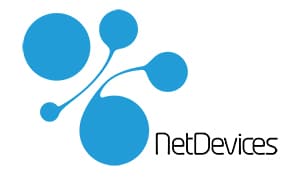La mise en place de Kubernetes dans un projet cloud peut varier en fonction du fournisseur de services cloud que vous utilisez. NetDevices vous informe sur les étapes générales que vous pouvez suivre pour déployer Kubernetes dans un environnement cloud, comme AWS, Azure, Google Cloud, etc.
1. Choisir un fournisseur de cloud :
Si vous n’avez pas encore choisi un fournisseur de cloud, sélectionnez celui qui correspond le mieux à vos besoins. Les fournisseurs actuels incluent AWS, Azure, Google Cloud, et d’autres.
2. Créer un compte et configurer les outils en ligne de commande :
Il est important de créer un compte sur la plateforme de cloud que vous avez choisie et configurez les outils en ligne de commande fournis par le fournisseur.
3. Installer kubectl :
Kubectl est l’outil en ligne de commande de Kubernetes. Installez-le sur votre machine locale pour pouvoir interagir avec votre cluster Kubernetes.
4. Configurer un cluster Kubernetes :
Selon le fournisseur de cloud, cela peut impliquer la création d’un cluster via l’interface en ligne de commande ou le tableau de bord de gestion du fournisseur.
- AWS EKS : Utilisez l’AWS Management Console, l’interface en ligne de commande AWS CLI, ou des outils comme eksctl :
- Azure AKS : Utilisez Azure Portal, l’interface en ligne de commande Azure CLI, ou le module Az pour PowerShell.
- Google GKE : utilisez le Google Cloud Console, l’interface en ligne de commande gcloud, ou des outils comme Terraform.
5. Configurer kubectl pour utiliser votre cluster :
Une fois que le cluster est créé, configurez kubectl pour qu’il pointe vers votre cluster. Cela implique généralement la configuration des informations d’authentification.
6. Déployer des applications :
Commencez par déployer des applications simples pour tester votre cluster. Vous pouvez utiliser des fichiers de configuration YAML pour décrire vos ressources Kubernetes (pods, services, déploiements, etc.) et les déployer avec kubectl.
7. Gérer et surveiller :
Explorez les outils de gestion et de surveillance fournis par le fournisseur de cloud, ainsi que des outils tiers comme Prometheus ou Grafana, pour surveiller les performances de votre cluster Kubernetes.
8. Configurer des politiques de sécurité :
Implémentez des politiques de sécurité pour protéger votre cluster, y compris l’authentification, l’autorisation et la gestion des secrets.
9. Automatiser le déploiement :
Utilisez des outils d’automatisation tels que Helm ou GitOps pour simplifier et automatiser le déploiement de vos applications sur Kubernetes.
10. Assurer la sauvegarde et la reprise d’activité :
Mettez en place des stratégies de sauvegarde et de reprise d’activité pour garantir la disponibilité continue de vos applications.
En conclusion : Les étapes peuvent varier en fonction de la plateforme, il est recommandé de consulter la documentation spécifique à votre fournisseur de cloud pour des instructions détaillées. De plus, utilisez des outils de gestion tels que Helm pour faciliter le déploiement et la gestion des applications sur Kubernetes.
NetDevices a déployé kubernetes dans de nombreux projets sur les clouds suivants :
- sur GCP (Google Cloud)
- sur AWS
- sur OVH Cloud avec synchronisation de 2 clusters distants sur les data centers de Roubaix et Strasbourg.
Partager la publication "Comment mettre en place kubernetes dans un projet cloud ?"



